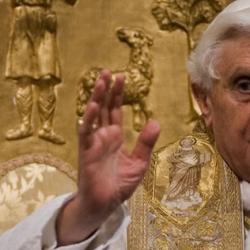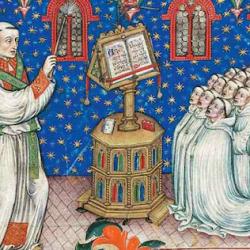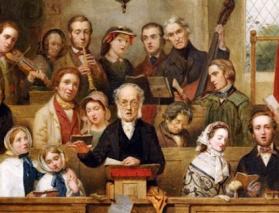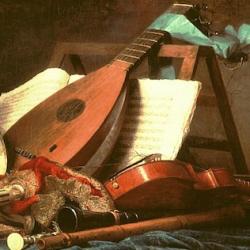Christopher Page observes ( The Christian West and Its Singers: The First Thousand Years ) that the European-wide diffusion of plainsong created created for monks and clergy “a means to record contingent events so that they would be perceived, wherever the account was read, not just in terms of time measured by the hourglass or water-clock, but also sub specie aeternitas . For those entrusted to relate the major events in the life of a pious magnate or churchman, the implications of the common liturgical culture for the art of giving depth to a narrative could be considerable.”
He cites the example of Abbot William of Eskill on the Eve of Easter:
“On the Thursday William tried to perform the Mandatum ceremony but was too weak to wash his brothers’ feet. Led to his chamber, he eventually asked for his bed to be carried into the choir so that he could take part in the Easter Day liturgy. At Matins, the choir had just begun the third responsory, Dum transisset sabbatum , when a sign was given that Abbot William was now at the point of death. His life began to pass away as the Sabbath passed. Dawn broke, and after singing the responsory Ut venientes ungerent Jesum , describing the anointing of Christ’s body, the Prior and some of the brothers left the choir to anoint William with holy oil. William was then dressed in penitential clothes and laid on a bed of cinders. He dies soon afterward, rising to a new life on the day of the Resurrection as the choir tearfully and triumphantly sang the appointed chant to end the service before the beginning of Lauds, Te Deum laudamus . William passed the last years of his life in one of the most remote abbeys of Latin Christendom; yet by the time of his death in 1202 there were many hundreds of churches and monasteries where this account would have been understood in its fullest and most moving spiritual depth, because the Office antiphoners and ordinals in those houses prescribed essentially the same sequence of chants for these same hours. The compiler perceives the meaning of what happened, and the facts of what happened, in terms of the appointed readings and chants.”















